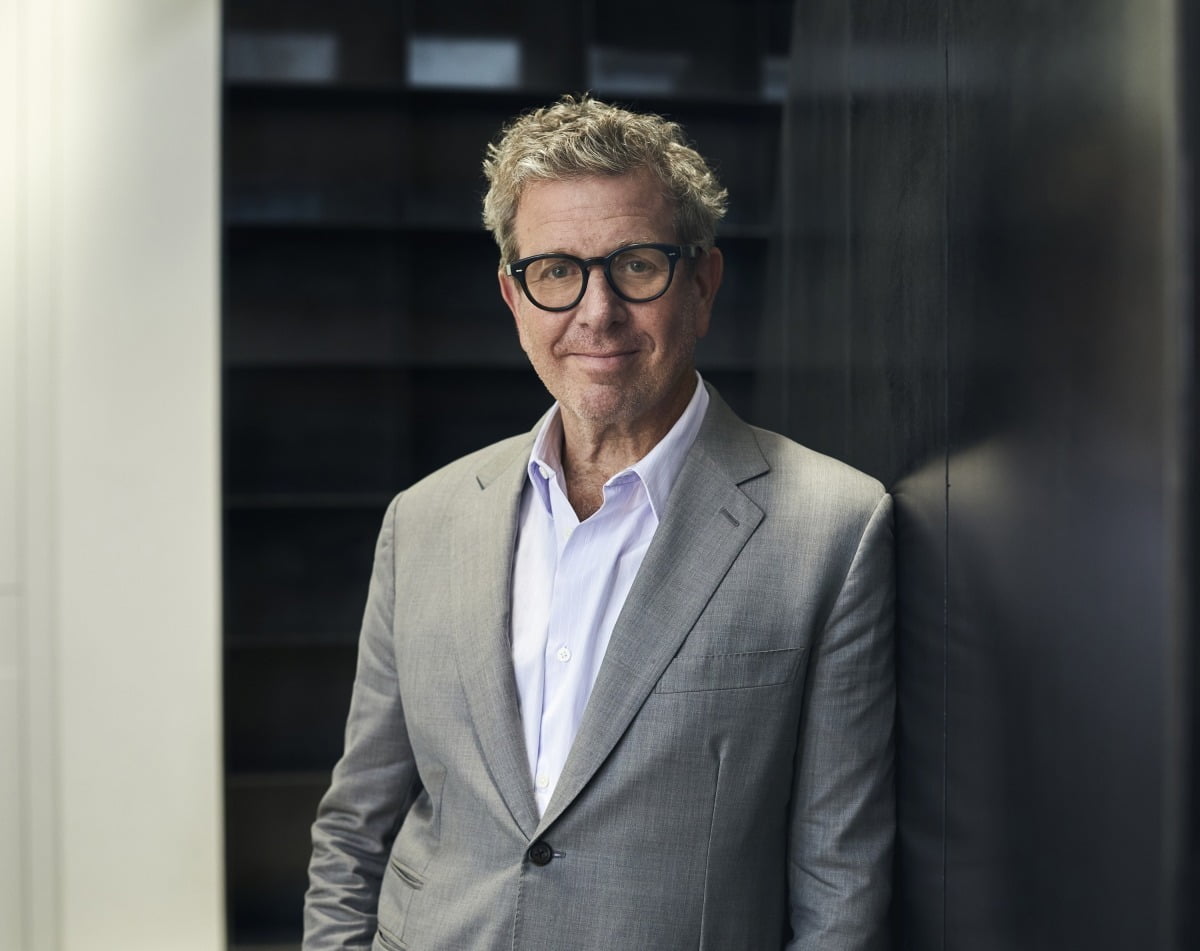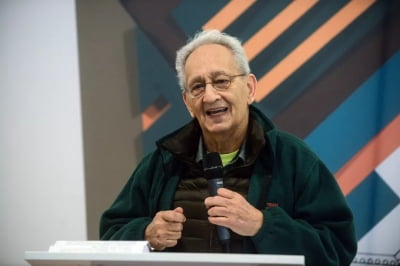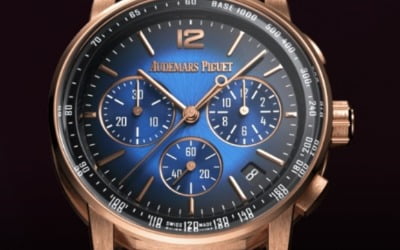"아시아 미술 시장은 정의할 수 없어요, 나라마다의 독특함을 축복하죠"
-
기사 스크랩
-
공유
-
댓글
-
클린뷰
-
프린트
[arte]에이드리언 청의 아트 살롱
Our Vision for Asia
PACE 갤러리 CEO&사장
마크 글림처가 말하는
아시아에 대한 우리의 비전
Marc Glimcher : Our Vision for Asia
Our Vision for Asia
PACE 갤러리 CEO&사장
마크 글림처가 말하는
아시아에 대한 우리의 비전
Marc Glimcher : Our Vision for Asia
안녕하세요. 아르떼 독자 여러분, 에이드리언 청입니다.
현재 미술 시장에서 갤러리 부문을 선도하는 한 인물을 소개하게 되어 매우 기쁘게 생각합니다. 마크 글림처는 저명한 국제 아트 갤러리인 페이스(Pace) 갤러리의 최고경영자(CEO)입니다. 지난 세기 가장 영향력 있는 현대 예술가와 작품들을 보여주고 있는 세계적인 아트 갤러리입니다. 1960년 아르네 글림처가 설립한 이래 페이스 갤러리는 중요한 역사 및 현대 전시를 여는 예술가 중심의 갤러리로서 뛰어난 이력을 쌓아왔습니다.
페이스는 미국, 유럽, 아시아에서 사업을 운영하면서 계속해서 아티스트를 지원하고 그들의 환상적인 작품을 전 세계 관객과 공유하고 있습니다. 2024년 도쿄에 새로운 갤러리를 열기로 발표했고, 베이징의 뷰잉룸과 더불어 서울과 홍콩에서도 사업을 확장할 계획입니다. 그런 상황에서 마크가 끊임없이 변화하는 아시아 미술 시장에 대한 중요한 전략적 통찰을 공유하는 것을 기쁘게 생각합니다.

아시아는 똑같을 수 없습니다. 아시아를 향한 우리의 비전은 이를 모토로 삼고 있습니다. 따라서 페이스 갤러리 역시 동질한 정체성을 갖고 있지 않습니다. 대신, 우리는 어딘가에 갤러리를 열 때 그 장소의 고유성을 존중하며 각 갤러리 위치에 맞는 맞춤형 접근 방식이 필요하다고 믿습니다. 이런 식으로 서울의 페이스 갤러리는 홍콩의 페이스 갤러리와는 완전히 다른 모델입니다.
어떤 패턴이 생겨납니다.
한국에서는 많은 수집가들이 미니멀리즘과 빛과 공간의 미학, 미묘하고 빛나는 것에 대한 깊은 이해와 타고난 애착을 가지고 있습니다. 그래서 로버트 어윈, 메리 코르세, 이우환과 같은 작가들이 수집가들의 관심을 끌며 유명 컬렉션과 미술관에 전시되어 있습니다. 추상표현주의와 팝아트의 선구자인 20세기 미국의 아이코닉한 예술가들에 대한 관심도 높아지고 있으며, 이들의 작품이 새롭게 평가되고 있습니다.
한국 수집가들은 수집 습관이 매우 사적인 경향이 있지만, 한국 대중에게 처음으로 소장품을 공개하는 사립 박물관이 점점 더 늘어나고 있는 점은 고무적입니다. 한남동 리움의 이웃들이 골드 스탠더드를 제시하고 있습니다.
홍콩은 자체적으로 수많은 유서 깊은 컬렉팅 가문을 보유하고 있고, 지난 20년간 국제 예술에 대한 욕구가 커지고 있는 중화권으로 향하는 창구이기도 합니다. 베이징의 페이스 갤러리는 2008년부터 2019년까지 798 지역의 건축학적으로 아름다운 건물에 자리했습니다. 이를 통해 우리는 베이징 예술가들과 새로 생겨나고 있던 컬렉팅 커뮤니티를 위한 문화 허브의 한가운데에 서게 되었습니다.
이제 새로운 세대의 수집가들이 그 역할을 맡게 되었고 국제적인 예술품의 인기가 높아지고 있습니다. 로이 할로우웰, 윌리엄 몽크, 카일리 매닝 등 미국과 영국의 현대 화가들은 중국 본토의 주요 박물관 전시회의 주제이며, 중국의 젊은 수집가들은 이 작가들의 작품을 자신의 컬렉션에 추가하는 것에 흥분하고 있습니다.
또한 이들 갤러리나 이러한 수집 패턴 중 어느 것도 올해 말 일본 아자부다이힐스에 개장할 도쿄 페이스 갤러리와 비슷하지 않습니다. 우리는 1980년대부터 일본에서 사업을 해왔고, 그곳에서 미국의 걸작을 일본 최고의 컬렉션에 포함시켰습니다.
여기에는 1990년 가와무라 박물관이 마크 로스코의 시그램 벽화를 인수한 것도 포함됩니다. 우리는 이제 일본에서 새로운 여정을 시작하고 있습니다. 상설 갤러리 공간을 통해 올해 5월 아자부다이 힐스 갤러리에서 35년 만에 도쿄에서 첫 전시회를 여는 로스코와 알렉산더 칼더 등 세계적인 거장들의 작품과 함께 현대미술 프로그램의 작품을 전시할 예정입니다.
이질적인 접근 방식을 통해 우리는 예술적, 지적 생활과 깊은 관계를 맺고 있는 장소에 갤러리를 개관하여 이러한 장소를 활기찬 문화 중심지로 만들 수 있다고 믿습니다. 각각의 새로운 갤러리의 발판은 사람으로부터 시작됩니다. 우리는 우리를 이해하고 무엇보다도 우리 아티스트를 믿으며, 자신이 사는 도시의 수집가와 시장도 이해하는, 페이스 갤러리 각 지점의 책임을 맡을 전문가를 찾습니다. 그 전문가는 우리 아티스트를 지역 사회와 연결하는 역할을 담당합니다.
페이스 갤러리의 CEO로서 제가 맡은 역할의 큰 기쁨 중 하나는 우리 아티스트를 새로운 관객에게 소개하는 것입니다. 누군가가 처음으로 예술가를 발견하는 것을 지켜보는 것은 놀라운 일입니다. 우리의 책임은 갤러리를 통해 아티스트의 작품을 위한 플랫폼을 제공하고, 수집가가 더 많은 것을 발견하고 더 깊이 감상하며 새로운 의미를 찾을 수 있는 접근성과 도구를 제공하는 것입니다. 이는 우리가 중화권과 한국, 그리고 곧 일본에서 계속할 일입니다.
마크 글림처·페이스 갤러리 CEO[칼럼 원문]
Adrian’s Intro:
It is with great pleasure that I introduce to you one of the leading forces in the gallery sector of the current art market. Marc Glimcher is the CEO of the prominent Pace Gallery – a leading international art gallery representing some of the most influential contemporary artists and estates from the past century. Since its founding by Arne Glimcher in 1960, Pace has developed a distinguished legacy as an artist-first gallery that mounts seminal historical and contemporary exhibitions. With their operation spanning from the US, Europe and Asia, Pace continues to support its artists and share their visionary work with audiences worldwide. Marking the announcement of a new Tokyo gallery in 2024, and a growing expansion in Seoul and Hong Kong, alongside a viewing room in Beijing, I am pleased to have Marc to share his important insights upon his strategy on the ever-changing art market in Asia.
It is with great pleasure that I introduce to you one of the leading forces in the gallery sector of the current art market. Marc Glimcher is the CEO of the prominent Pace Gallery – a leading international art gallery representing some of the most influential contemporary artists and estates from the past century. Since its founding by Arne Glimcher in 1960, Pace has developed a distinguished legacy as an artist-first gallery that mounts seminal historical and contemporary exhibitions. With their operation spanning from the US, Europe and Asia, Pace continues to support its artists and share their visionary work with audiences worldwide. Marking the announcement of a new Tokyo gallery in 2024, and a growing expansion in Seoul and Hong Kong, alongside a viewing room in Beijing, I am pleased to have Marc to share his important insights upon his strategy on the ever-changing art market in Asia.
I am often asked by Americans to define “the Asia art market.” My response is always that it’s impossible. Because the truth is there are several art markets within Asia. The art market in Jakarta bears little resemblance to the art market in Delhi. There are serious collectors in both places, but what they are drawn to in contemporary art—whether they value figurative painting or evocative conceptual art—their motivations for collecting, their collecting habits, and, yes, even their budgets differ greatly.
Asia cannot be homogenized. Our vision for Asia takes this as its mantra. Thus “Pace Gallery” does not a have homogeneous identity either. Instead, when we open a gallery somewhere we celebrate the uniqueness of that place and we believe a bespoke approach is needed for each gallery location. In this way, Pace Gallery in Seoul is a different model entirely to Pace Gallery in Hong Kong for example.
There are certain pattens that occur.
In Korea many collectors have a strong appreciation for and an innate connection to the ethereal and luminescent, to the aesthetics of Minimalism and Light and Space—artists such as Robert Irwin, Mary Corse, and Lee Ufan have captured collectors’ interest and appear in very prominent collections and museums. There is a growing interest too in iconic American artists of the twentieth century, pioneers of Abstract Expressionism and Pop Art are being appreciated anew. The collectors in Korea tend to be very private with their collecting habits, although we’re grateful to see more and more private museums emerging that are making collections visible to the Korean public for the first time. Our neighbors at the Leeum in Hannam Dong have set the Gold Standard.
While Hong Kong has a number of legacy collecting families of its own, it is also a window into Greater China where the appetite for international art has been growing for two decades. With our Beijing gallery, which from 2008 to 2019 was housed in an architecturally beautiful building in the 798 district, we found ourselves in the middle of a cultural hub for the city’s homegrown artists as well as its nascent collecting community. Now a new generation of collectors has taken up the mantle and international art is growing in popularity. Contemporary painters from the US and UK such as Loie Hollowell, William Monk, and Kylie Manning are the subject of major museum shows throughout mainland China, and young collectors there are excited to add works by these artists to their collections.
It also follows that neither of these galleries nor these collecting patterns bear a resemblance to what Pace Gallery in Tokyo will be when it opens later this year in Azubudai Hills. We have been doing business in Japan since the 1980s, where we placed American masterworks into the country’s best collections. This included the acquisition of the Seagram Murals by Mark Rothko by the Kawamura museum in 1990. We are now on the cusp of a new journey in Japan, where a permanent gallery space will allow us to show work from our contemporary program alongside world-renowned names such as Rothko and Alexander Calder, who will be the subject of his first show in Tokyo in 35 years opening this May at Azabudai Hills Gallery.
Through our heterogenous approach we believe in opening galleries in locations where we have deep ties to the artistic and intellectual life that makes these places vibrant cultural centers. The springboard for each new gallery begins with a person—we find an expert to take up the helm of each Pace Gallery location who understands us and believes in our artists first and foremost, and who also understands the collectors and the market in their city. That person is responsible for connecting our artists to the local community.
One of the great joys of my role as CEO of Pace Gallery is to bring our artists to new audiences. Witnessing someone discover an artist for the first time is a wonderful thing. Our responsibility is to provide a platform through our galleries for our artists’ work, and to provide access and tools for collectors to discover more, go deeper in their appreciation, and to find new meaning. This is what we will continue to do in Greater China and Korea, and soon also in Japan.
/Marc Glimcher·Chief Executive Officer of Pace Gallery


![[칼럼] ‘ESG 기본법’ 제정하는 ‘ESG 국회’를 바란다](https://img.hankyung.com/photo/202404/01.36557147.3.jpg)

![K팝 업계에도 '친환경' 바람…폐기물 되는 앨범은 '골칫거리' [연계소문]](https://img.hankyung.com/photo/202206/99.27464274.3.jpg)


